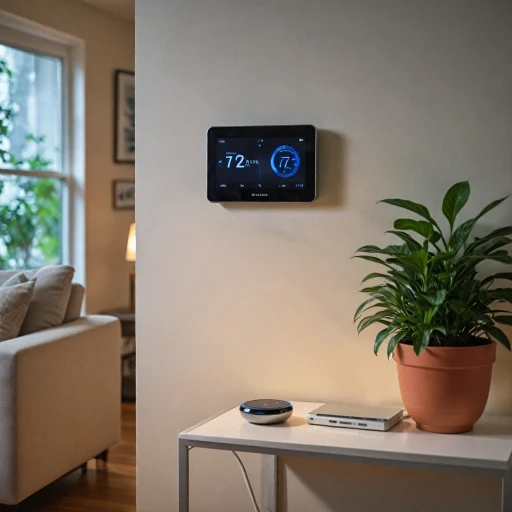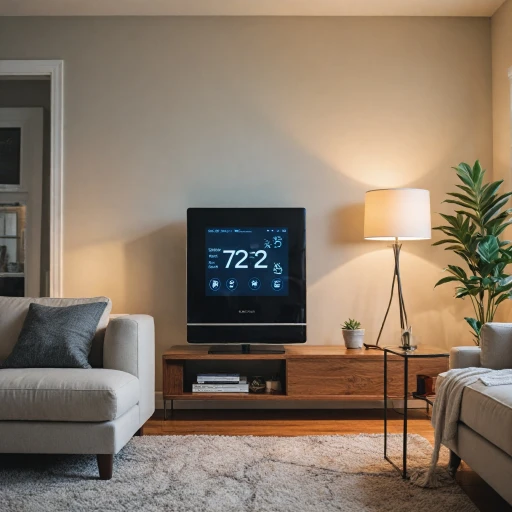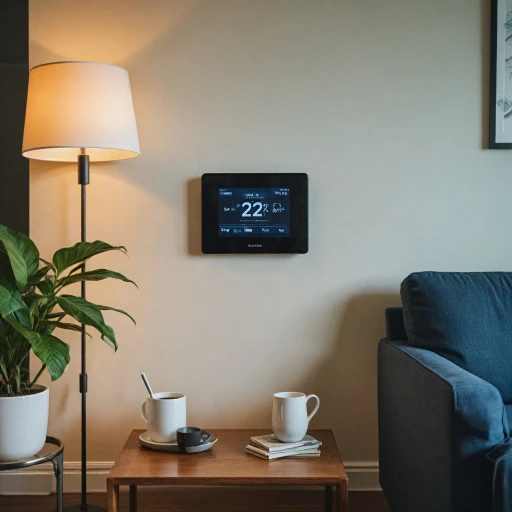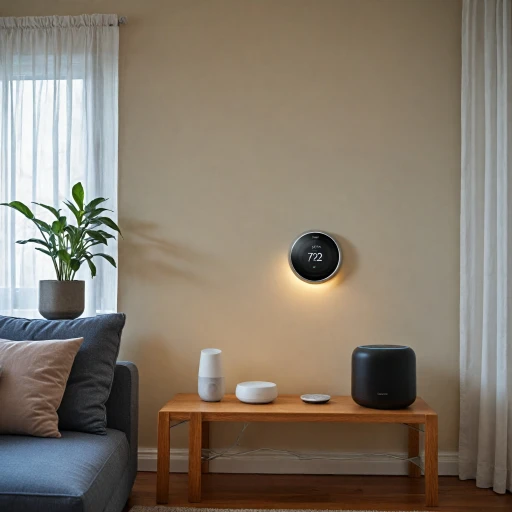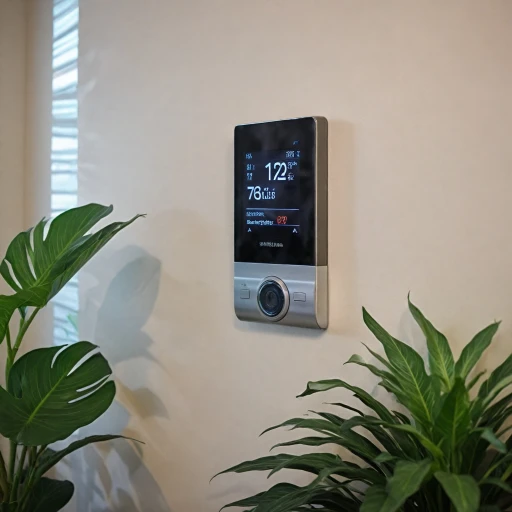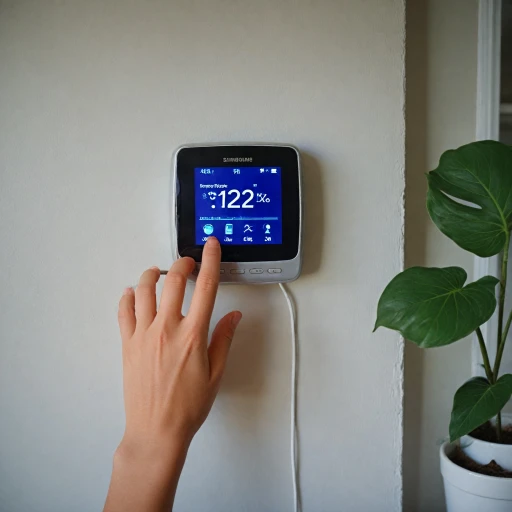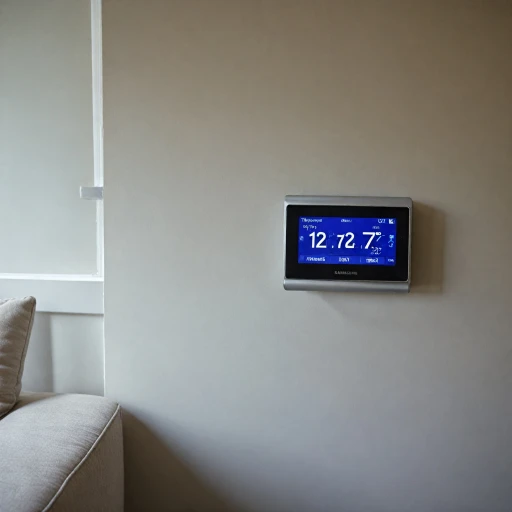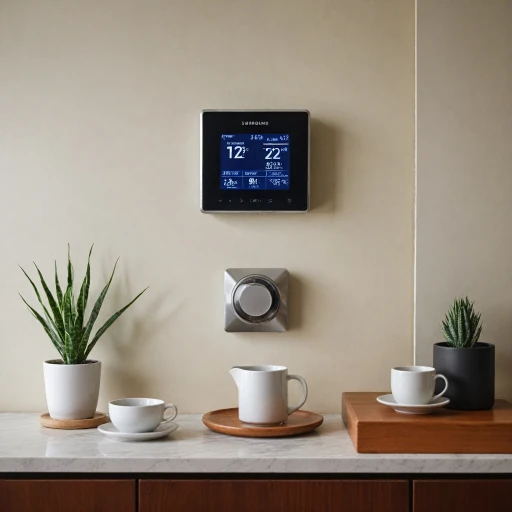
Overview of Google Nest Thermostat
Introduction to the Revolutionary Google Nest Thermostat
In the world of smart thermostats, the Google Nest Thermostat stands out as a notable innovation. As an integral component of today's eco-friendly and tech-savvy homes, this device exemplifies cutting-edge technology combined with user-friendly features. A trailblazer in the smart thermostat category, it brings a new level of efficiency and convenience to managing home temperatures. Smart thermostats like the Nest not only offer seamless control over heating and cooling settings, but they are also designed to save energy, which can lead to reduced utility bills. What sets the Nest Thermostat apart is its ability to "learn" your schedule over time. This learning thermostat intelligently adjusts temperatures to your routine, further optimizing energy usage. Compatible with a variety of HVAC systems, the Google Nest Thermostat offers users a significant advantage. By easily connecting to most single-stage heating and cooling systems, heat pumps, and more, it proves its versatility in different home settings. For those interested in exploring compatibility further, a detailed understanding of thermostat wiring diagrams can be a crucial step. The thermostat's sleek design and intuitive control make it an attractive addition to any home. With its Energy Star certification, it promises improved energy efficiency, aligning with both economic and environmental benefits. Beyond the hardware itself, the thermostat integrates effortlessly with the Google app, offering remote access and comprehensive control of your home's climate anytime, anywhere. As buildings become smarter and more connected, the future of the Google Nest Thermostat looks promising. It serves as a cornerstone for more advanced 'smart home' ecosystems, providing an expandable module for those looking to enhance their home automation systems. Whether your interest lies in saving energy, improving comfort, or simply experiencing the latest in intelligent home technology, the Google Nest Thermostat is a wise choice.Compatibility with HVAC Systems
Ensuring Your HVAC System is Ready
When planning to integrate Google Nest Thermostat into your home, it's vital to ensure that your HVAC system is a compatible nest. Conventional heating and cooling systems with single stage heat or stage heat are usually compatible with Nest thermostats. Additionally, systems like heat pumps often present compatibility; however, verifying compatibility specifics is essential to avoid any confusion or potential mishaps.
Diverse System Types
While many HVAC systems work well with the Google Nest Thermostat, including both heating and cooling systems, the intricate nature of some systems means you should use the official compatibility checker provided by Google. This tool assesses your system's specifications and analyzes which thermostat gen it supports, which is crucial for a seamless integration.
Wiring and Installation
Understanding your system's wiring is a crucial component of setting up a Google smart thermostat. For older systems, additional wires like a C-wire might be required for powering the unit. Ensuring this wire's presence or confirming heating cooling HVAC system compatibility can make the process straightforward. An effective method for a smooth installation is referring to guides such as how to install your thermostat with ease which simplifies wires and installation complexities.
Energy Efficiency Benefits
Integrating a Google learning thermostat can significantly contribute to save energy. Many systems that achieve energy star certification can enhance energy efficiency notably thanks to the advanced temperature control capabilities of smart thermostats. By accurately managing the temperature, these thermostats provide a system that adapts and learns, which can lead to cost savings and increased comfort in your living space.
Integration with Smart Home Devices
Smart Home Integration with Google Nest
The Google Nest thermostat is designed to fit seamlessly into your smart home ecosystem, enhancing convenience and energy efficiency. As a smart thermostat, it connects with various systems and devices, making it a versatile choice for homeowners looking to streamline their temperature control. One of the key features that sets the Nest thermostat apart is its ability to integrate with multiple smart home platforms. Whether you're using Google Assistant, Amazon Alexa, or Apple HomeKit, the Nest can easily become a central component of your home automation system. This integration allows users to control their heating and cooling systems through voice commands, providing a hands-free experience. In addition to voice control, the Nest thermostat is compatible with various smart home systems. Its versatile nature means you can adjust settings from your smartphone using the Google app, ensuring you have control over your home’s temperature no matter where you are. The app provides a user-friendly interface for adjusting schedules, viewing energy usage, and receiving alerts about your HVAC system. Moreover, as part of its integration capabilities, the Nest learning thermostat is compatible with other smart devices in your home. This includes smart plugs, lights, and even thermostats from other brands. By creating an interconnected network of devices, the Nest can optimize your home’s energy usage, potentially reducing your energy bills. The Nest thermostat is also equipped with Energy Star certification, a testament to its energy-saving capabilities. This feature, alongside its compatibility with a wide range of devices and systems, ensures that the Nest thermostat not only simplifies temperature control but also contributes to a more efficient and eco-friendly home. For those looking to enhance their home's smart capabilities and ensure they're using the most out of their smart thermostats, understanding how these systems work in conjunction with each other is crucial. It aids in troubleshooting any compatibility issues you might face and helps in future-proofing your smart home solutions. You might want to further explore the waterproof temperature gauges which play an integral role in smart thermostats, offering additional insights into enhancing your home system efficiency (source: waterproof temperature gauges).Wi-Fi and Connectivity Requirements
Ensuring Robust Connectivity for Seamless Performance
Having the right Wi-Fi and connectivity setup is crucial for the optimal performance of your Google Nest Thermostat. This smart device relies heavily on a stable internet connection to deliver real-time updates and enable remote control via the Google app. Ensuring a strong and reliable connection can significantly enhance the operation and energy efficiency of your HVAC systems.
Here are a few considerations when setting up your Nest thermostat to guarantee robust connectivity:
- Wi-Fi Compatibility: The Nest thermostat requires a 2.4 GHz or 5 GHz Wi-Fi network, which is standard in most homes. Ensure your system supports these frequencies for uninterrupted service.
- Signal Strength: Place your wireless router closer to the thermostat or use Wi-Fi extenders if needed to maintain a strong signal and avoid connectivity issues.
- Network Security: Since the thermostat connects with your home's internet, having a secure network is paramount. Use strong passwords and updated security protocols to keep your system protected.
Troubles may still arise; for instance, if your network undergoes updates or changes. Ensure that you promptly reconnect the thermostat to the network by following the setup prompts on the app. Addressing these factors will help you prevent most connectivity issues, maximizing your ability to control heating and cooling efficiently and save energy in your home.
Troubleshooting Common Compatibility Issues
Resolving Common Compatibility Troubles with Your Nest
Getting a Google Nest thermostat to work flawlessly with your HVAC system can sometimes be tricky, leading to a few hiccups along the way. These are some of the typical compatibility conundrums you might encounter and practical steps to get them sorted.
- Wiring Mismatches: A common issue arises from incompatible wiring. Identify your HVAC system's wiring type—most notably, whether it is a heat pump, single-stage, or multi-stage heat and cooling setup. Make sure wires are correctly connected to correspond with your Nest learning thermostat's requirements.
- Incompatible Systems: Ensure your HVAC system falls within the compatibility parameters. The Google Nest Thermostat is generally compatible with a vast range of systems but double-check if yours is among them by using a compatibility checker.
- Connectivity Issues: Adequate Wi-Fi strength is crucial for seamless functioning. Make sure your Internet connection is stable by placing your router close enough to the Nest thermostat, and check that there are no obstructions or interference.
- Software Bugs: Sometimes, the Google app's updates and interactions with different systems might lead to bugs or glitches. Ensure your smart thermostat is updated with the latest firmware, and perform a reboot if needed.
It's essential to have a proactive approach regarding your smart thermostat's compatibility; ensuring everything works cohesively will not only enhance its performance but can lead to substantial energy savings in the long haul. Remember, if in doubt, consulting professionals can provide peace of mind and reliable efficiency for your system.
Future-Proofing Your Smart Home
Preparing for Future Advancements in Smart Technology
As we embrace the integration of smart technology into our daily lives, it becomes crucial to consider how your smart thermostat can adapt to future advancements. When investing in a Google Nest Thermostat, ensuring that your system remains compatible as technology evolves is key. One aspect to consider is the ever-evolving landscape of HVAC systems. With the introduction of energy-efficient systems, and potentially new standards on the horizon, compatibility remains a pivotal point for concern. The Google Nest's adaptability across various HVAC systems exemplifies the importance of choosing products with a proven track record of compatibility. To future-proof your home, think of how the Nest can evolve with your other smart home devices. Maintaining compatibility with Google systems, such as smart speakers and the Google Home app, is not just about seamless control today. It’s also about ensuring you can easily integrate new devices and updates as they become available. Key Tips for Future-Proofing:- Check for continuous updates: A Nest thermostat that receives regular software updates can adapt more easily to new HVAC requirements or innovative tech advancements.
- Compatibility checker: Use a compatibility checker tool to assess how well the thermostat will function with newer systems and ensure it remains part of your smart ecosystem.
- Monitoring energy savings: Taking advantage of energy-saving features will not only lower your bills but also keep you in tune with new energy standards.



